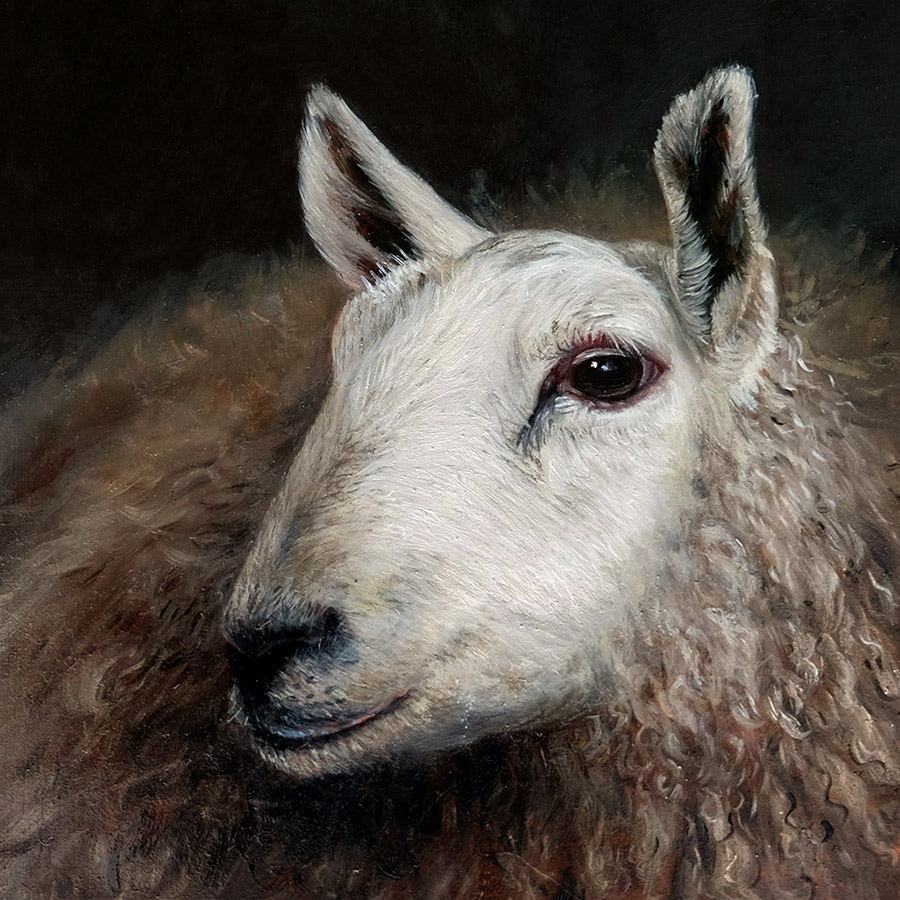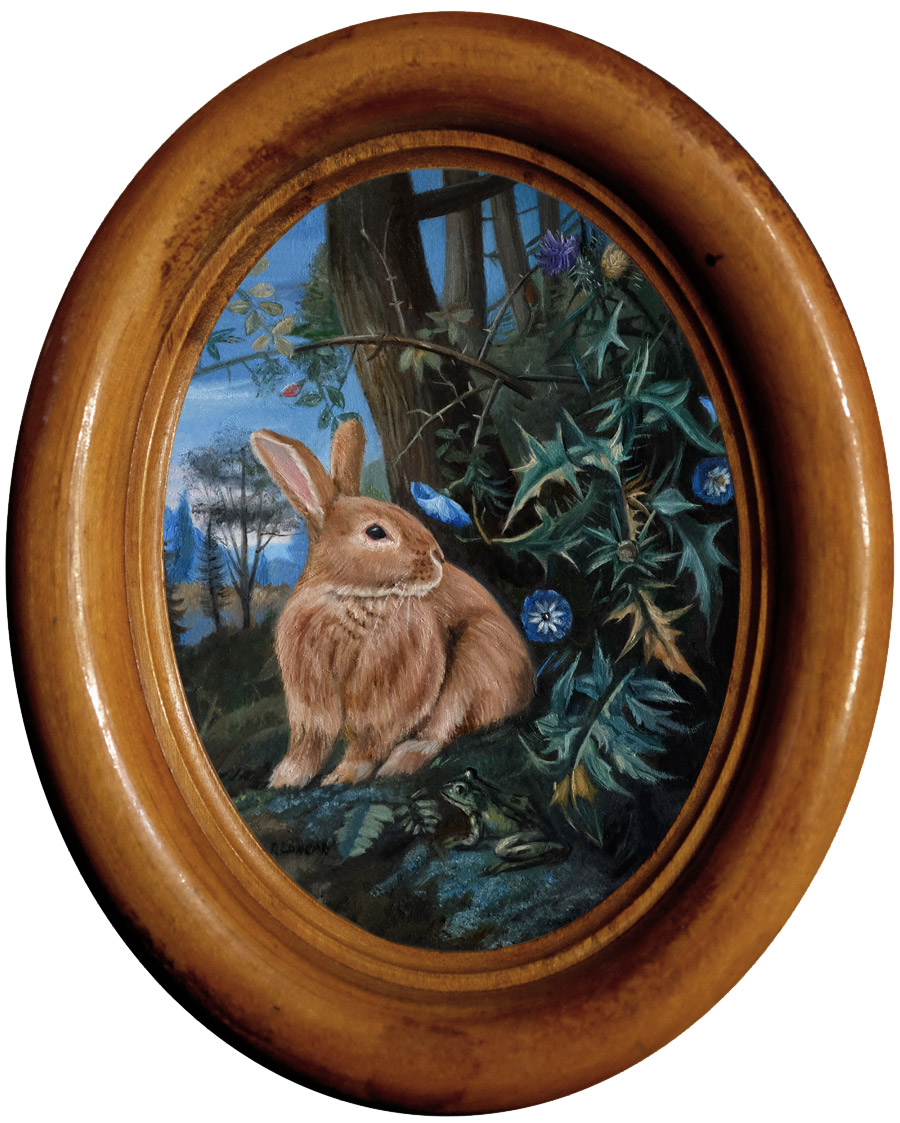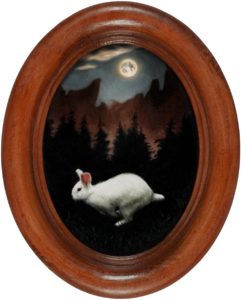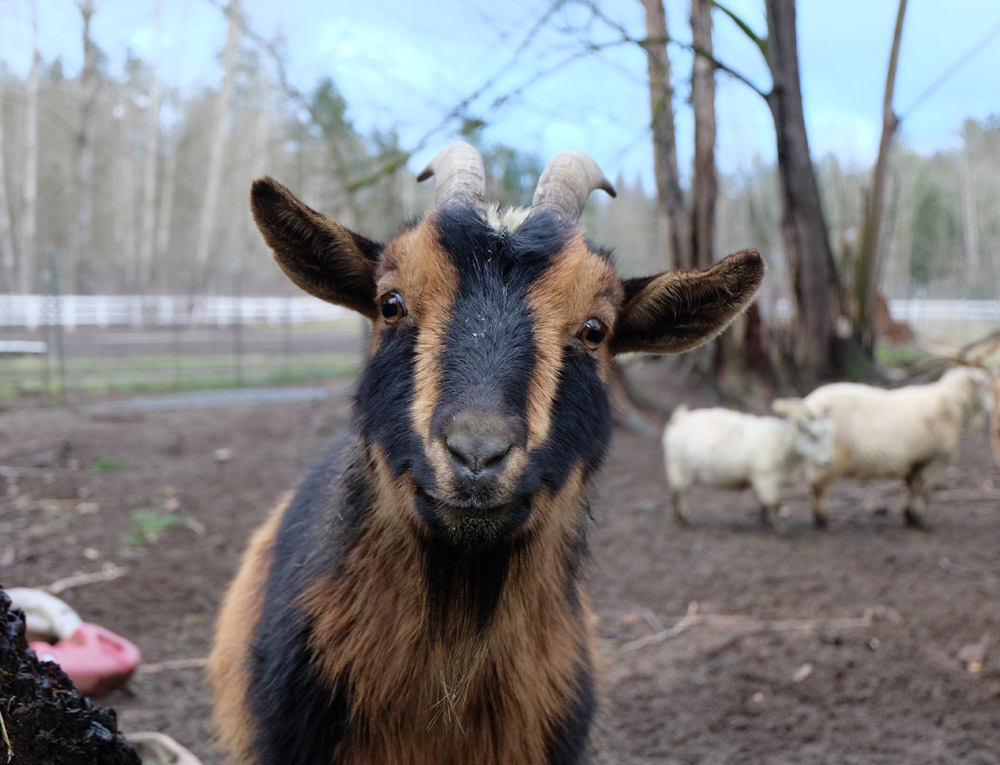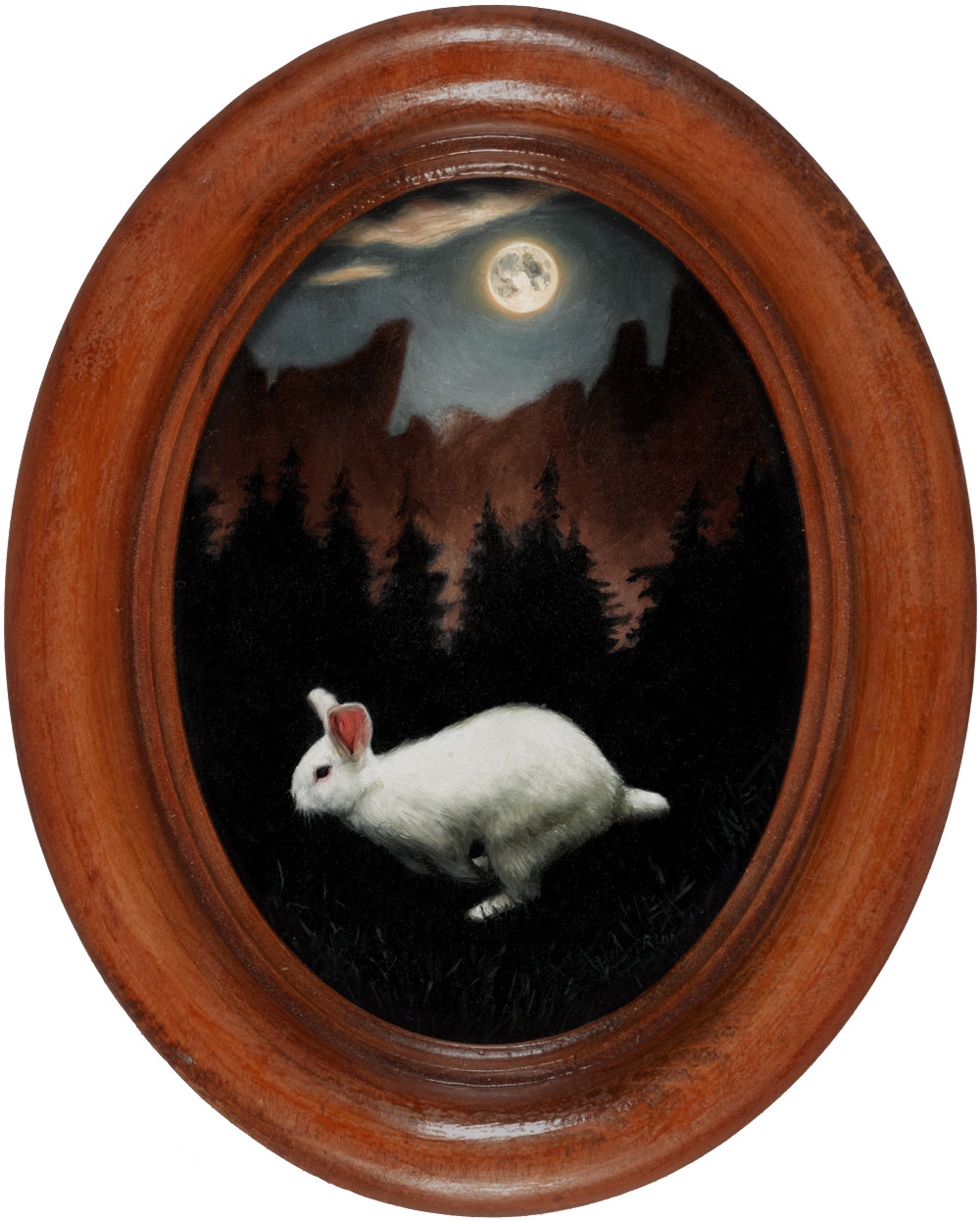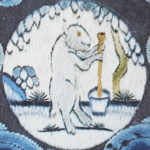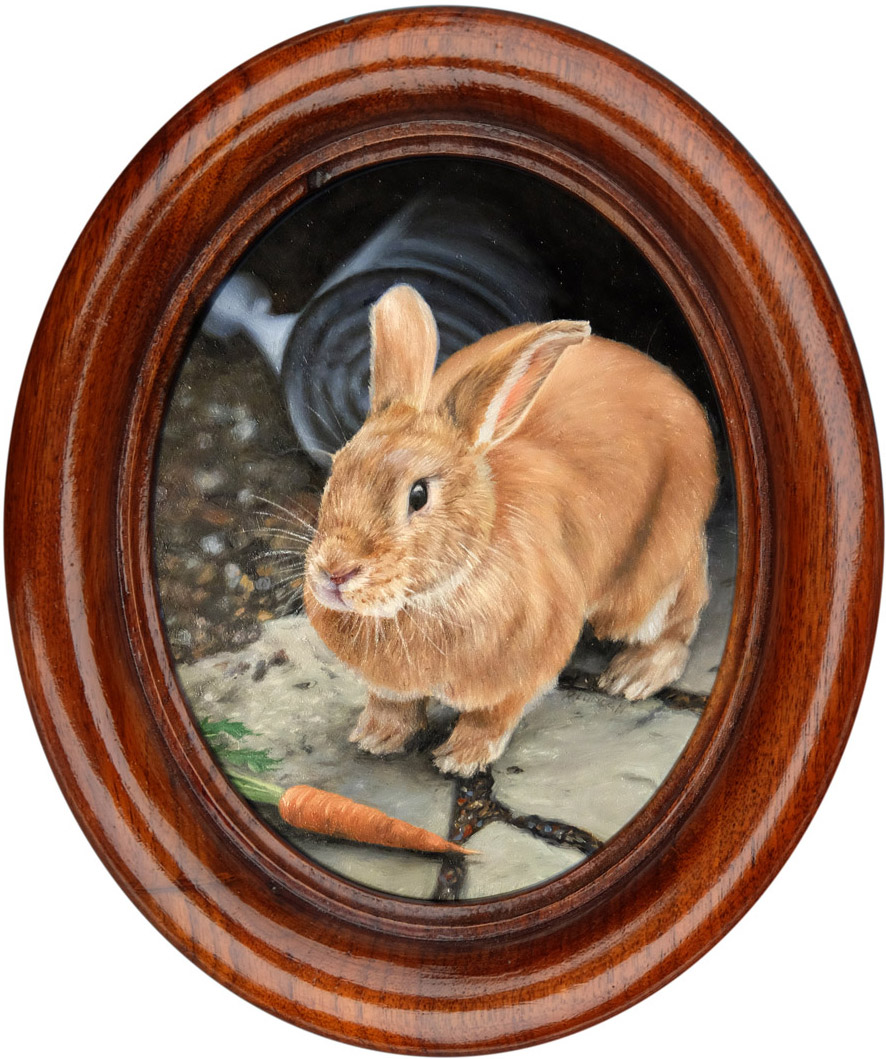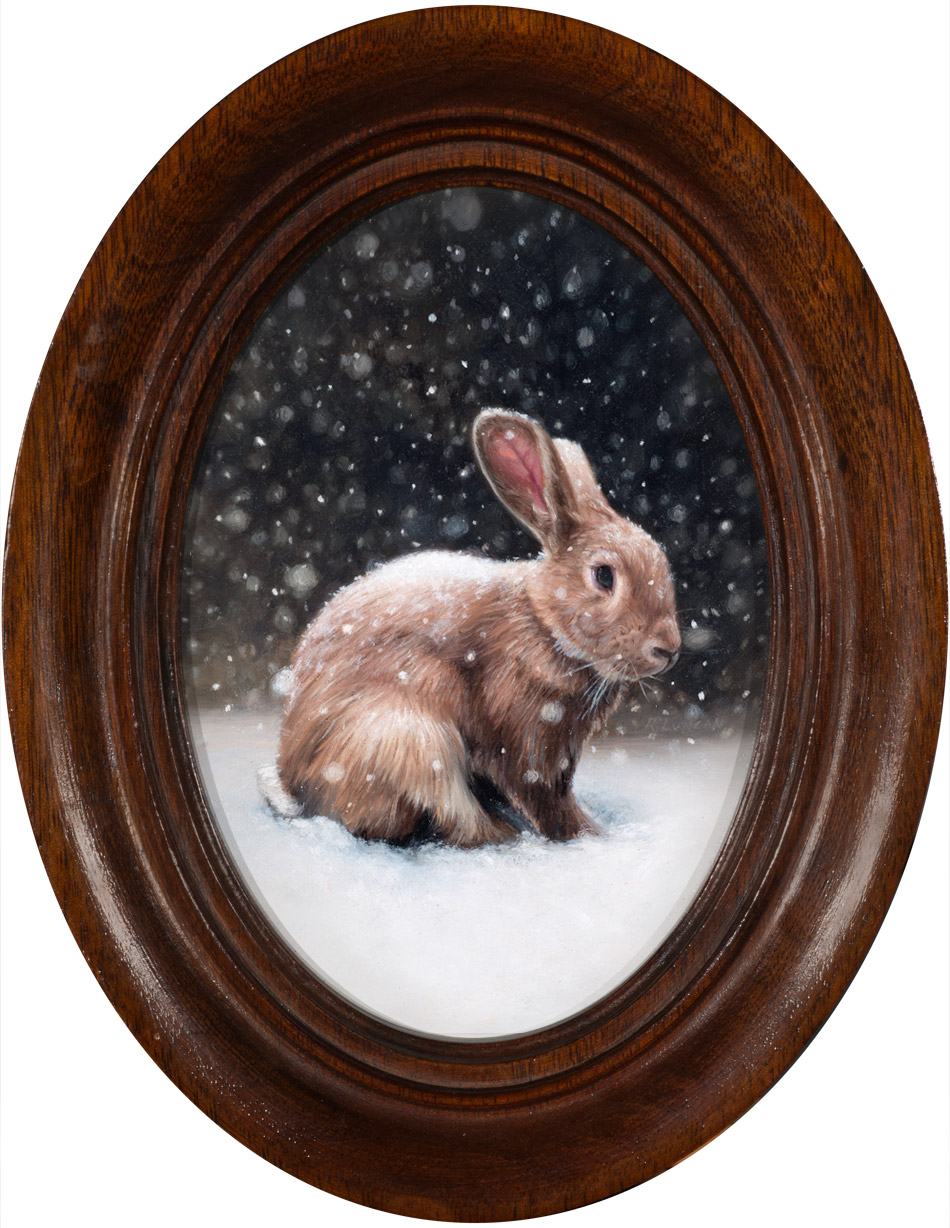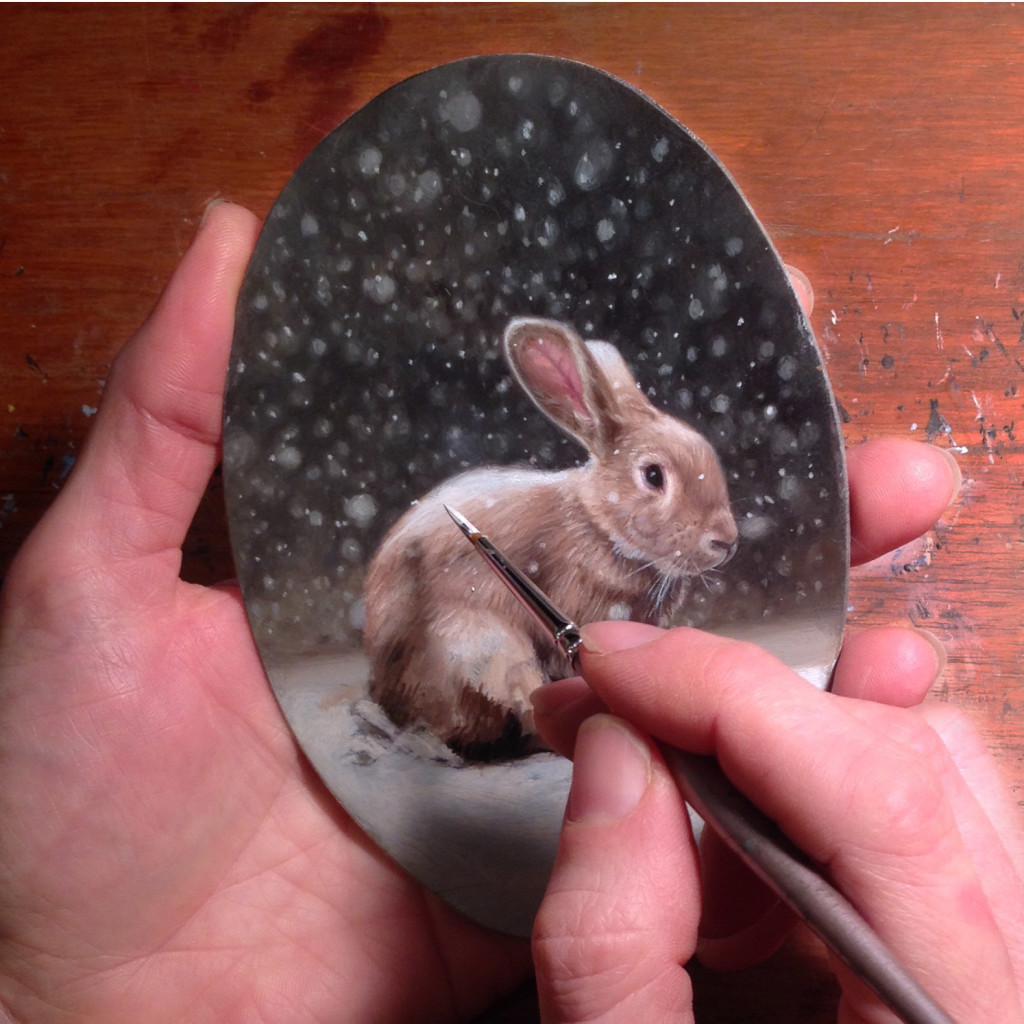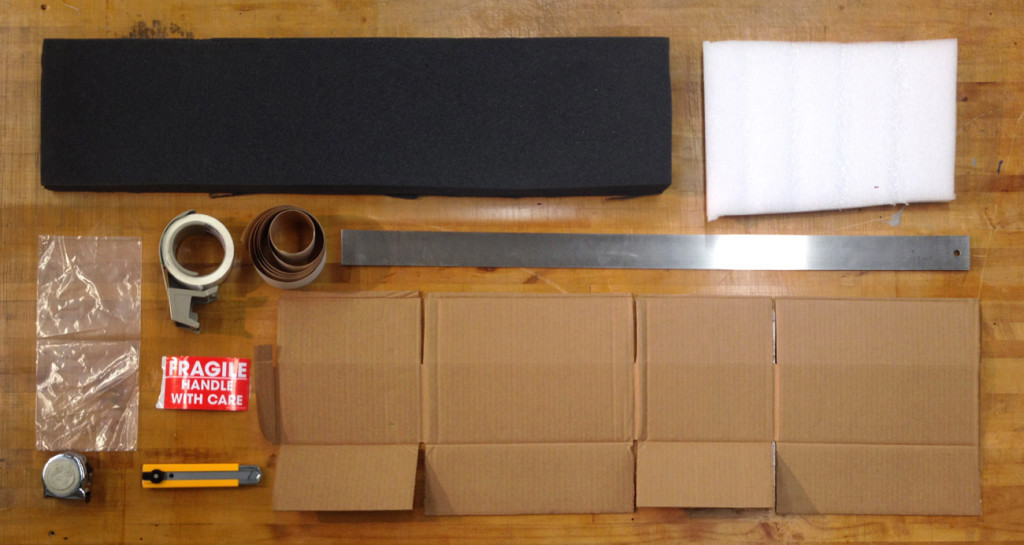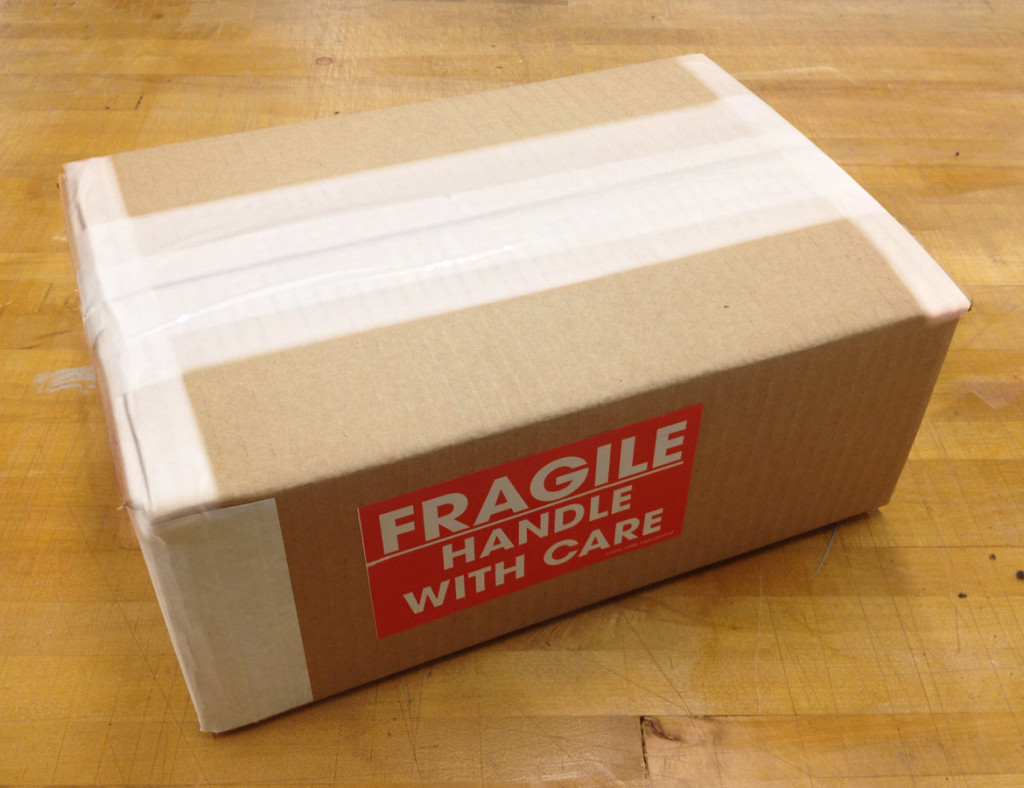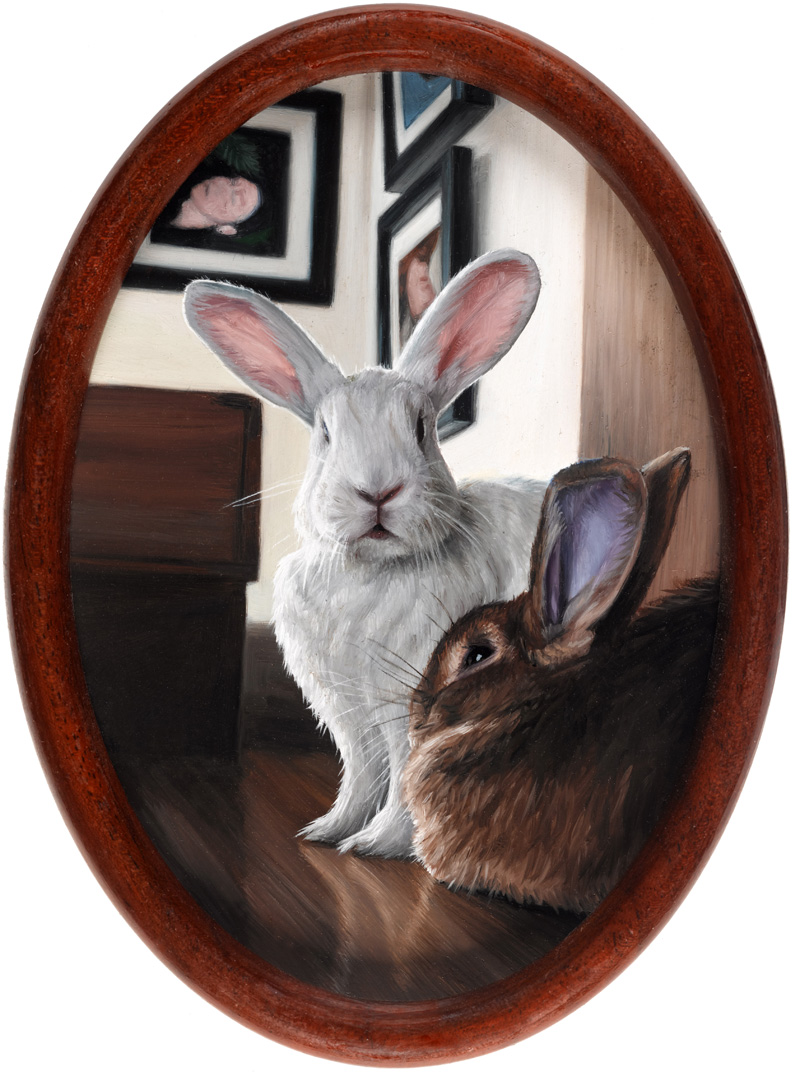Miniature Portrait of a Miniature Cheviot Sheep
The Miniature Cheviot Sheep is an old breed of sheep that ranges wild across the hilly interior of Britain. As a lineage preserved distinct from modern, meat-producing breeds (including other Cheviot breeds), they are known for being hardy and wild, and their wool is prized for its warmth and durability due to its crimp. Very few Miniature Cheviot Sheep exist in the Americas, and my mother-in-law Margot keeps them because she values their ability to lamb and thrive unassisted. They are fast and agile, with intact instincts for motherhood and self preservation, and they were difficult to photograph!
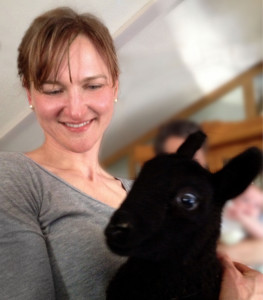
Me and one of Margot’s Easter babies from a couple years ago. They’re softer than you can imagine!
I grew up on twenty acres with all sorts of creatures. When I was still very young, my father was disabled by multiple sclerosis, so my memories of the animals he kept are childlike impressions, images and feelings without stories attached. I don’t remember why we bottle-fed baby goats (my sister does), but I do remember how the goats looked and sounded. Memories of those days are warm and fuzzy in every sense, and they are all bundled up tight with memories of my dad, who also introduced me to art. Now I have a mother-in-law, Margot, with her own farmyard animals, and these animals still bring me a sense of warmth and love and the endless wonders of childhood.
“Into the Country” is my second series of Monthly Miniatures, in which I plan to develop one of several ideas sparked by painting “Paintings of Rabbits” (the first Monthly Miniature series). Each month will feature an animal from Margot’s animal family, in a style inspired by classical Dutch portraiture, with naturally-lit subjects against a dark, simple background to emphasize and personify the subject.
